Ready to unleash the full power of the treadmill on your workout goals? Here is the beginner’s guide to the treadmill, including tips and workouts to get you started.
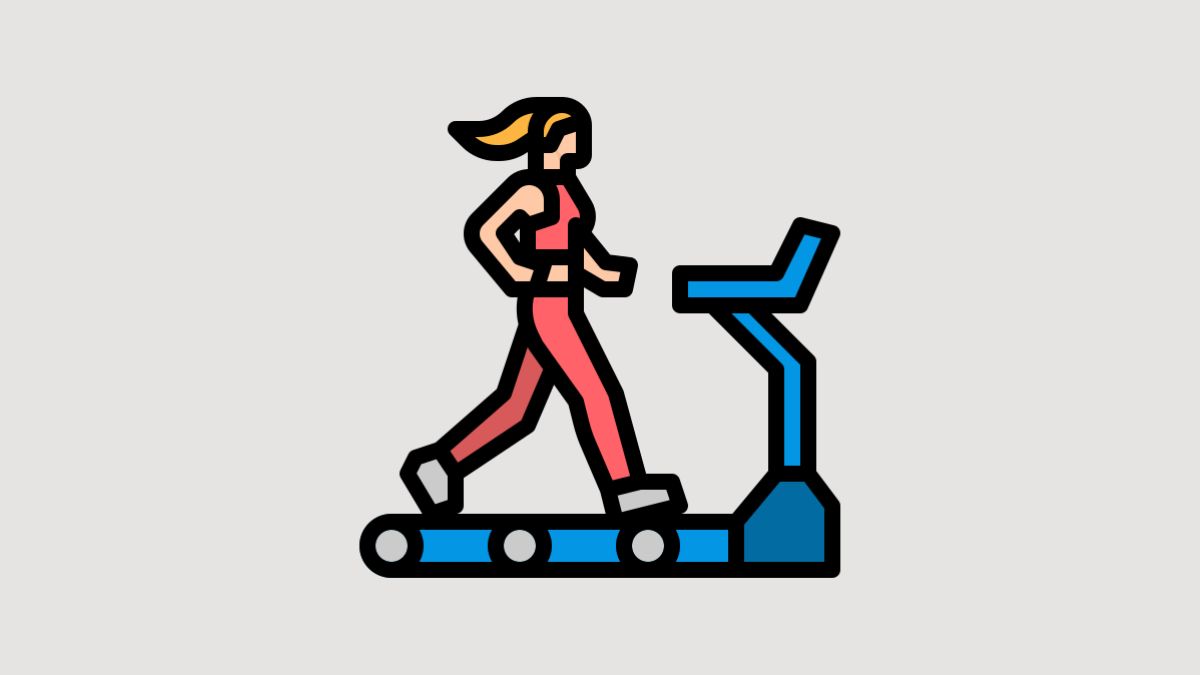
New to working out on the treadmill? Not sure how to make the most of the time you spend training?
Well, you’ve come to the right place!
In this article, we will talk about how to get in the best treadmill workout possible, even if you’ve never stepped on the treadmill before.
We’ll walk you through the basics of how to run properly on a treadmill, from the beginning of your workout to the end, with advice specifically crafted for beginners.
By the time you finish this post, you’ll be ready to get in your first treadmill workout and start pushing yourself to new heights of fitness.
So let’s dive in…
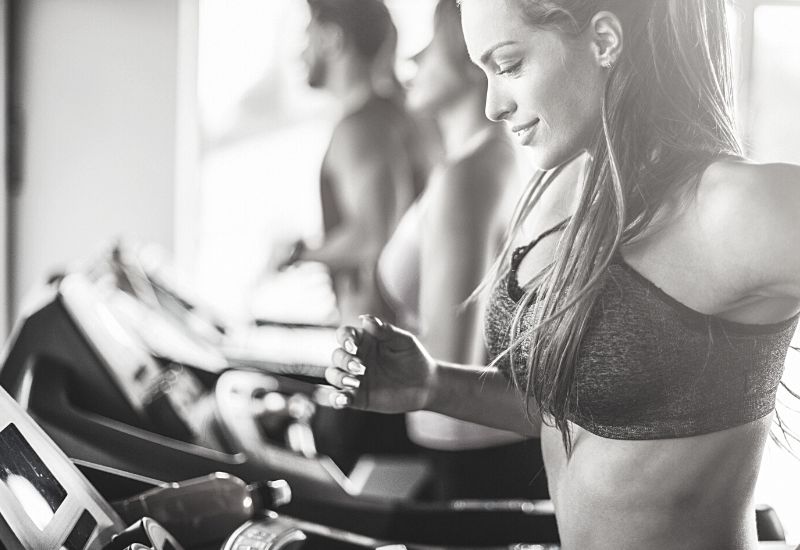
Treadmill for Beginners — Tips for Success
Here are the basic steps to getting in a truly epic treadmill workout even if you’re a total newbie:
Set a Goal for Each Treadmill Workout
Start off with a time goal.
Often, when it comes to running on the treadmill for beginners, people find it easier to work if they have a specific amount of time in mind.
For example, if you’re fairly certain that you can run for five minutes without struggling, set yourself a goal of running for 10 minutes. Or if you’ve tried jogging in the past and hit 15 minutes of running time, push yourself a bit harder and set a 20-minute goal.
See also: The Best Treadmills with Screens for Online Workouts, Streaming, and TV
Or, you can set yourself a distance goal. Some people prefer to focus on how many miles (or kilometers) they run—say, if they’re training for a 5K or 10k race. Or they find it easier to track their distance when running rather than watching the clock.
The key is: Whatever works for you, do it!
You have to go into your workout with a goal of some sort, either time, distance, or calories. That way, you can push yourself hard and stay focused without feeling like your run is endless and pointless.
You can simply get in, get the work done, and get off when you’re finished.
Warm-Up First
Even though you are keen to get your workout on, resist the urge to jump onto the treadmill “cold.”
Your muscles, joints, and cardiovascular system need time to warm up. Warming up will loosen stiff muscles and joint tissue, enabling them to flex, bend, and contract more efficiently. It will also reduce your risk of injury—i.e. a pulled hamstring or sprained ankle.
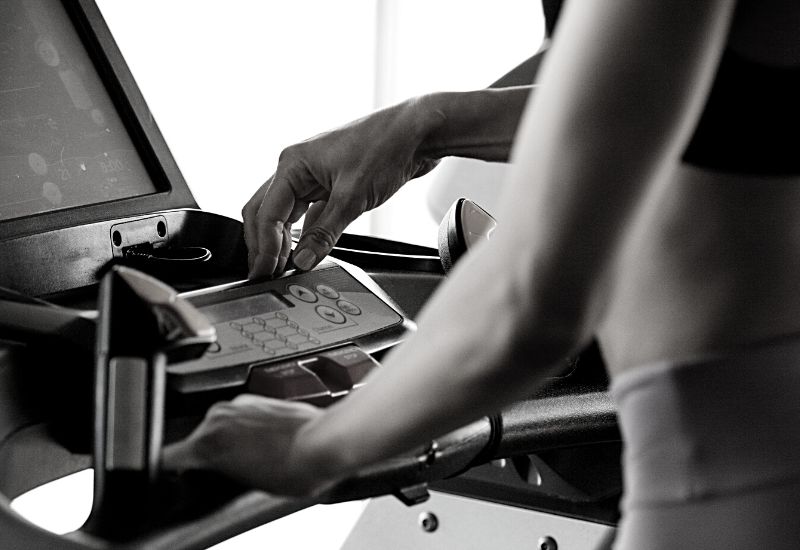
But warming up also serves a second purpose: it gets your body burning fat.
Initially, your body starts off burning glucose-based energy. This energy is available in your bloodstream, your liver, and stored in your muscles.
Your body has anywhere between 400 and 500 calories’ worth of this energy available. The more you burn through it, the more your body has to activate stored fats to use to power your muscles when you work.
Warming up (doing some light exercise) will get the internal combustion engine of your body working, burning through this glucose-based energy. However, because it’s low intensity, your body can activate the stored fats into energy.
Adding a short warm-up helps you avoid injury, burn more calories, and also get up to speed faster at the beginning of your walk or run on the treadmill.
Over the course of your workout, especially if you are doing a low-intensity workout like jogging, your body will shift more to burning fat than glucose—or at least in equal measure.
Your warm-up is crucial for getting your body into fat-burning mode, which makes your jog more effective overall for consuming your stored excess body fat.
How should you warm-up?
- Start off with some light stretching. Limber up all your muscles and joints—not just the ones that will be doing the work when you run, but your upper body muscles and joints, too. Spend 5 to 10 minutes doing dynamic stretches (i.e arm and leg swings) stretching out your entire body from your neck muscles down to your ankles.
- Move on to light exercise. Most people will walk to warm up because walking is easy on the body and unlikely to risk injury when your muscles and joints are “cold.” Plus, it’s low-exertion so you won’t tire out before your workout starts.
Start Out at a Walk
Your workout begins with a warm-up walk, but you don’t have to start running right away. In fact, you can keep walking in order to give yourself a chance to adapt to the workout.
Granted, walking at your slow “warm-up” pace won’t really give you that cardiovascular workout you want. So, push the speed by a bit.
Looking to improve your running technique and form? We have also written a comprehensive guide on how to run on the treadmill like a pro, including tips for proper form and technique.
For example, I like to warm up for the first minute or two at 3.2 MPH. However, as my body limbers up and warms up, I push the speed to 3.5 or 3.6 MPH for the rest of my warm-up.
If you aren’t yet ready to push it to a full jog (4.5+ MPH) or run (5+ MPH), try a bit of speed walking. Really, any pace around 4 MPH will be a fast enough walk that will get your heart pumping and your body moving.
Raise Your Pace Slowly
Don’t make the mistake of going to a full-on run (or sprint) before you’re ready!
The treadmill benefits really kick in over the course of your full workout. If you push your pace too quickly and run out of steam prematurely, you won’t be able to get in a proper treadmill training session. You’ll “gas out” before you really start burning calories or reach your time or distance goal.
So, raise your pace slowly. If you’re walking at around 3.6 to 3.8 MPH, try raising your pace to a jog, between 4.3 and 4.8 MPH. That’s a good starting place for newbies working out on the treadmill for the first time.
Give yourself a few minutes running at that pace and see how it feels. Initially, it may feel a bit easy, and that’s because you’re burning through glucose-based energy, which is plentiful in your bloodstream and muscles. However, after 5 to 10 minutes, your body will begin making the switch to burning more fat-based energy, so you won’t feel as energized as you did in the beginning.
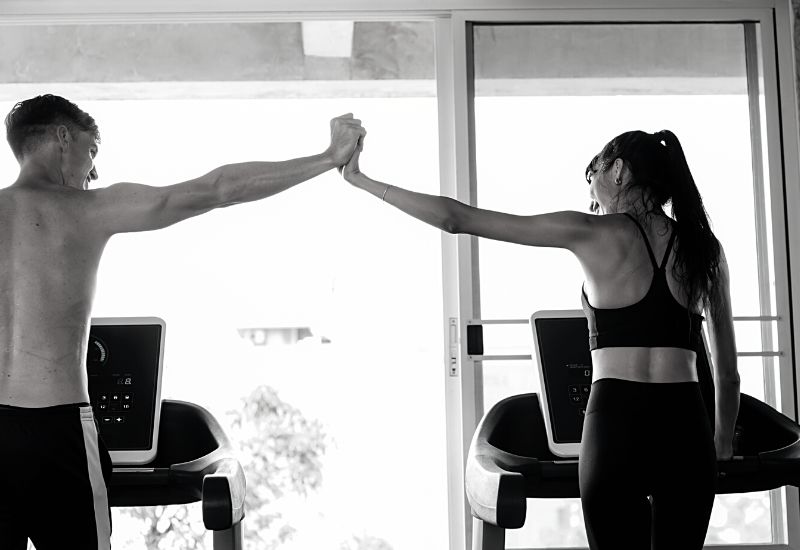
But don’t give up yet! Push through this period of sluggishness; when you come out the other side, you’ll be reinvigorated as your body adapts to burning both fat and glucose.
When you hit the 10 to 15-minute mark, you’ll get another jolt of energy that will deplete more slowly. You’ll feel yourself growing more and more tired the longer you run. That is when you push yourself to hit your time or distance goal.
If you’re feeling like the 4.3 to 4.8 MPH pace is too easy, try pushing it to 5 to 5.5 MPH (a “run” pace). Give yourself a few minutes running at that speed to see how it feels, to see if it’s a sustainable pace for the duration of your run (based on your time or distance goal).
However, give yourself leeway to lower the pace to a jog, or even a walk, if necessary. See how you feel throughout the run and choose the pace that best suits your current fitness level.
Walk-Jog-Run
An easy way to test your fitness is with the Walk-Jog-Run test.
Once you complete your warm-up, work in three-minute intervals:
- Walk for one minute.
- Jog for one minute.
- Run for one minute.
After you finish that interval, return to a walk and see how you’re feeling. If you’re breathing hard and struggling to maintain the run pace, settle for a slightly slower pace (perhaps a jog will suit you best).
If you find that you can complete that last one-minute run without struggling too hard, set a faster pace, somewhere between a jog and a fast run.
Play around with the increased speed, repeating the three-minute interval test as needed to see how your body goes through the workout.
Raise the Incline Slowly
There are lots of treadmill incline benefits, including increased engagement of your glutes and hamstrings, a greater challenge for your cardiovascular system, and more calorie/fat-burning.
However, just because there are benefits of this type of workout, it doesn’t mean you have to run at an incline on your very first workout. Especially if you have experienced knee pain running on the treadmill in the past.
Don’t get me wrong, running at an incline is a great way to simulate outdoor conditions. In fact, you should set the treadmill to a 1% incline– it essentially mimics the difficulty of added air resistance when you are running outside1.
If you want to test out using an incline treadmill, start out at a gentle incline—anywhere up to 5%.
See how that feels on your body: how much your muscles struggle, how much more energy you burn, how much faster you tire out, even how it strains your knees, ankles, hips, and lower back.
Fun Fact: Research has found that walking on an incline can increase calorie expenditure by as much as 60% compared to walking on flat ground2.
For those who feel great at this gentle incline, consider raising the incline more. But for those who just aren’t feeling it yet, or who aren’t up to tackling this challenge on their first treadmill workout, return the incline to 1% and focus on the time and distance goals to begin with.
Always End with A Cool-Down
Just like you had to spend a few minutes warming up in order to give your body a chance to prepare for the exercise, it’s imperative that you take the time to cool down afterward.
You can just step off the treadmill and get on with your day, sure. However, spending a few minutes cooling down by walking at a slow pace and stretching out your muscles will do wonders to reduce post-workout stiffness and soreness, as well as prevent injuries.
There are so many benefits of treadmill walking and running both!
By following the tips above, you’ll be able to take advantage of this awesome cardio machine and use the treadmill to maximum effect for fat-burning and improved fitness.
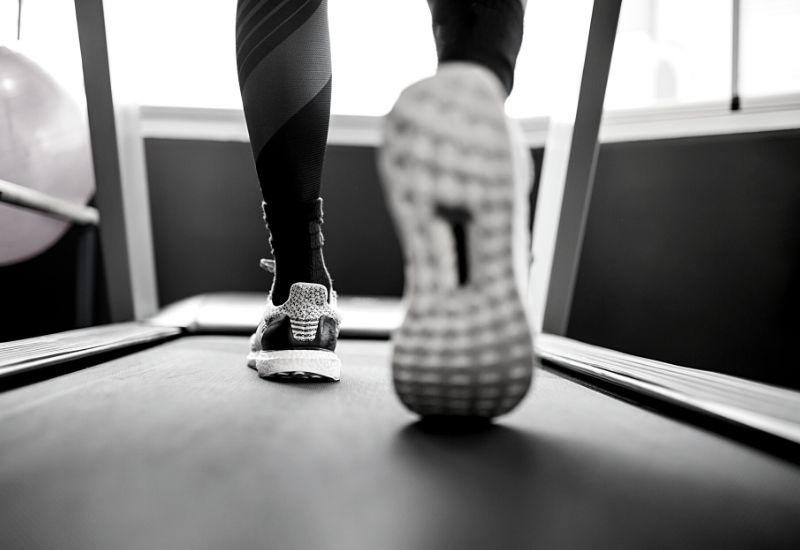
Treadmill Machine Workouts for Beginners
Ready to get started with your first workouts? Here are some simple, newbie-friendly cardio workouts that you can try from day one:
Workout #1: Cadence Count
This workout focuses on how many steps you take in a minute, and uses that cadence count to push yourself a bit harder every minute.
The Workout:
- Start off with five minutes of stretching, and five minutes of slow-paced walking or jogging. Get your body nice and warm and ready to train!
- Set the treadmill to a pace you feel comfortable with. If you can, send it to a jog speed (say, 4.5 MPH). If you’re more comfortable starting off at a walk, set the speed to 3.6 to 3.8 MPH for a slightly faster walk.
- For the first minute, count how many steps you take in that 60-second period.
- For the second minute, speed up your pace just enough that you take two more steps than you did in the previous minute.
- For the third minute, add two to five more steps per minute.
- Every minute on the minute, keep adding 2 to 5 more steps per minute. Your pace will gradually speed up until you go from a fast walk to a jog to a run.
- Push yourself until you can’t speed up anymore.
- Return to your starting pace for five minutes of low-intensity cardio exercise.
- Cool down with 5 to 10 minutes of slow-paced walking and some light stretching.
Workout #2: Easy HIIT Workout
This workout will teach you the basics of high intensity interval training, or HIIT.
It combines periods of high-intensity exercise to push your cardiovascular endurance to the max with periods of low-intensity exercise that allow your body to recover.
The Workout:
- Start off with five minutes of stretching, and five minutes of slow-paced walking or jogging.
- Raise the speed to 8+ MPH (sprint speed). Sprint for 30 seconds.
- Drop the speed back to a fast walk (3.8 to 4.2 MPH). Walk for two minutes.
- Continue alternating these 30 seconds of high-intensity exercise with two minutes of recovery.
- Aim to complete 25 minutes of this back-and-forth running, but allow yourself to stop at the 20-minute mark if you are gassing out.
- Cool down with 5 to 10 minutes of slow-paced walking and some light stretching.
Workout #3: Ladder Workout
This workout starts off slow but pushes your body to move faster and faster until you reach a higher speed.
You work until you are moving as fast as you can (a pace you can maintain for 60 seconds), then you work back down to your starting pace.
It’s a great option for burning serious calories and pushing your fitness!
The Workout:
- Start off with five minutes of stretching, and five minutes of slow-paced walking or jogging.
- Start off at a standard walk speed, say 3.6 MPH. Walk at the speed for one minute.
- At the one-minute mark, raise your speed by 0.2 MPH. Maintain the speed for one minute.
- Raise the speed again by 0.2 MPH for another minute.
- Continue raising the speed until you are running at 5 to 6 MPH (whatever feels like a fast run to you).
- At the one-minute mark, reduce your speed by 0.2 MPH. Maintain that speed for one minute.
- Every minute on the minute, decrease your speed by 0.2 MPH until you are back at your starting speed.
- Cool down with 5 to 10 minutes of slow-paced walking and some light stretching.
The Bottom Line
Just because you’re new to treadmill running, that doesn’t mean you have to suffer!
In fact, you’ll find the treadmill is a very beginner-friendly machine that can help you get an amazing workout no matter your fitness level.
The tips above will help you to get in your first treadmill workout the right way. You’ll be safe, work hard, and see the long-term results that you want!
More Treadmill Guides and Articles Like This
Manual vs. Motorized Treadmills: Which is Best for Your Goals? Wondering whether a manual or motorized treadmill is best for you? Below, we highlight the differences between the two so that you can choose the right treadmill for your running goals.
Curved Treadmills: Pros, Cons, and Who Should Use One. Wondering if the curved treadmill is the right treadmill for your goals? Here’s a detailed look at the benefits (and disadvantages) of this popular treadmill so you can see if it’s right for you.